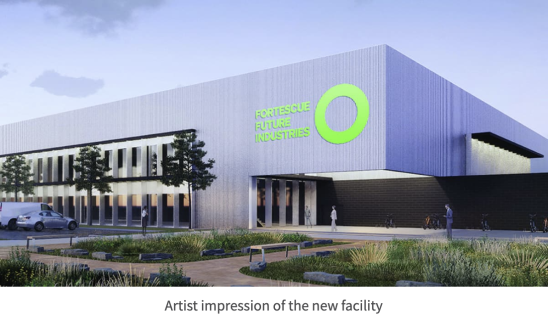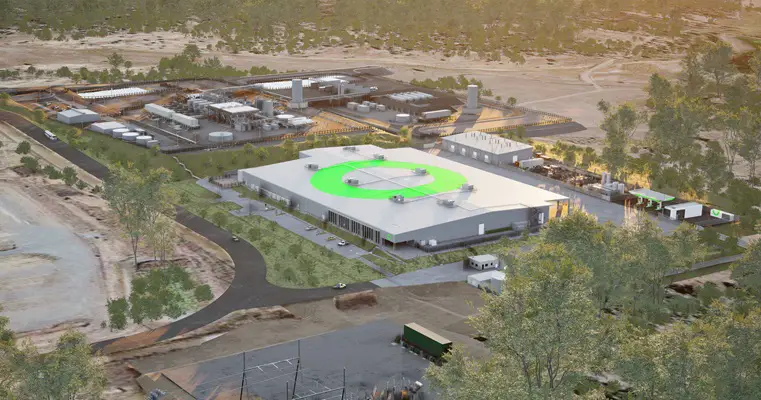Gladstone Electrolyser Facility, Australia’s largest hydrogen electrolyser manufacturing facility and the country’s first to manufacture hydrogen electrolysers at a commercial scale has been opened. This was recently announced by Fortescue, a West Australian integrated green technology, energy and metals company.
Fortescue is the project’s owner and developer. The electrolyser factory was previously a 50-50 joint venture between Fortescue and Plug Power, an American company engaged in the development of hydrogen fuel cell systems that replace conventional batteries in equipment and vehicles powered by electricity. The latter however exited the partnership in January 2023.
The Gladstone Electrolyser Facility is the first stage of a wider Green Energy Manufacturing Centre project that is being developed by Fortescue on a 100-ha site located on the Aldoga Industrial Estate in the Gladstone State Development Area, Central Queensland.
It has an initial production capacity of over 2GW per annum which can significantly increase current global production. At full capacity, the facility can produce more than 200,000t of green hydrogen each year.
Development of Fortescue PEM50
The next phase of the Green Energy Manufacturing Centre project is the construction of a 50MW green hydrogen production facility dubbed PEM50. According to Fortescue, this project has already received development approval from Queensland’s Coordinator-General, paving the way for construction to begin.
Reportedly, PEM50 will utilize the locally made Proton Exchange Membrane (PEM) electrolysers with approval to produce green hydrogen for local and export markets. According to reports, once operational PEM50 will be the first commercial-scale green hydrogen facility for the West Australian integrated green technology, energy and metals company.

The Government of Queensland has provided an electrical substation, road network, communications, and local scheme water connection, as well as allocated land in support of the Green Energy Manufacturing Centre project.
What are hydrogen electrolysers?
An electrolyzer is a device that uses electricity to split water or other components into their constituent elements through electrolysis, a chemical reaction where an electric current passes through a substance, causing it to decompose into its basic components.
In the case of water electrolysis, an electrolyzer uses an electric current to split water molecules into hydrogen, which can be stored as either compressed gas or liquefied and oxygen which is released back into the air or captured and stored to supply to other industrial processes.
Electrolysis capacity for dedicated hydrogen production has been growing in the past few years, but the pace slowed down back in 2022 with about 130 MW of new capacity entering operation. This was 45% less compared to the new capacity entry the previous year.
On the other hand, electrolyser manufacturing capacity increased by more than 25% since 2021, reaching nearly 11 GW per year in 2022. According to predictions, by 2030 this capacity could be between 170-365 GW per year owing to the planned and ongoing electrolyser projects.
However, this capacity is still low as more than 550 GW is required by 2030 to enable electrolysis capacity to get on track with the Net Zero Emissions by 2050 (NZE) Scenario.
Also Read
Templers BESS project, Australia’s second-largest, given a green light
Australia’s largest remote-grid solar power plant, Dugald River, opened officially
Construction of Collie BESS, the largest battery storage in Australia begins

